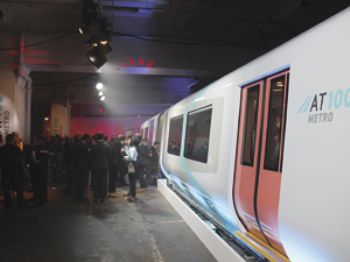
Aimed primarily at the UK market, the Hitachi AT100 and AT200 are intended to expand on the existing AT300 design to create a family of trains that can be configured using standard components to cover a wide range of applications.
The AT100 is a high-density inner-suburban train-set with 20m-long cars for use on intensive metro-type services, while the AT200 is targeted at a wider range of commuter, suburban and inter-regional applications with operating speeds of between 140km/h and 200km/h (it has a nominal vehicle length of 23m).
Hitachi has already been shortlisted by Transport for London — alongside Bombardier, CAF and Siemens — to supply 39 four-car ‘metro-style’ electric multiple-units (EMU) for London Overground services.
The company expects to offer the AT200 when ScotRail calls tenders for EMUs to operate between Edinburgh and Glasgow upon completion of the EGIP (Edinburgh Glasgow Improvement Programme) upgrading and electrification programme.
Both the AT100 and AT200 train-sets meet the UK’s C1 loading gauge, with Hitachi suggesting that its use of friction-stir-welded aluminium body shells ensures ‘go anywhere’ gauge clearance while maximising passenger space.
Chief operating officer Andy Barr says that while the engineering design “was still being finalised”, the trains would be equipped for dual-voltage operation (2kV 50Hz and 750V DC).
In the medium term, he suggested that lithium-ion battery hybrid variants would be offered for use over sections of non-electrified line up to 30km long, adding that this technology had progressed “substantially” since Hitachi undertook its Hayabusa trials with an IC125 train-set in 2007.
Alistair Dormer, Global CEO of Hitachi Rail Systems, confirmed that the company intends to build a demonstrator EMU of at least three vehicles next year, as a speculative venture at its own expense. Series production would take place at Hitachi’s Newton Aycliffe plant — currently under construction and scheduled to open next year.